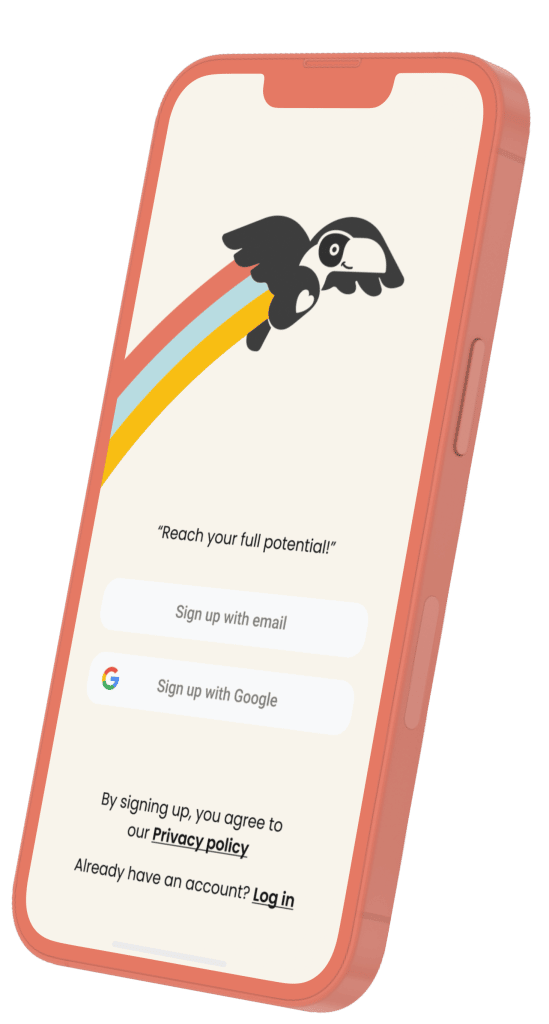What does a cv look like? If you’ve decided to leap into the world of job hunting, you must consider how to write a CV! Regardless of where you work, corporate or startup, knowing what professional CVs should look like is crucial. After all, you want to stand out as the best candidate and avoid rejection. Your CV (or Curriculum Vitae) is a great alternative to your resume and may even serve the same purpose (more about this later).
So, if you don’t get it right, you’re likely to face a rejection right off the bat. But if you get it right, you’re likely to be called in for a virtual assessment centre and interview in no time.
Without much ado, let’s take a look at what your CV should look like in 2021 and beyond.
What is a CV?
Your CV or Curriculum Vitae, tells your prospective employers more about you and why they should hire you over other successful applicants. Research shows that recruiters look at your CV for less than 6 seconds when reviewing applications.
What’s the difference between a CV and a resume?
You must be wondering what a professional CV looks like or differ from a resume. In short, it depends on where you come from.
If you’re from Europe, they technically mean the same thing and serve the same purpose. But if you’re from the United States, they’re poles apart.
A resume refers to a one-page (max. two pages) document used for job hunting in all industries in America. In contrast, a CV is a longer and more detailed document used for academics and jobs in academia.
You won’t need a CV to apply for a job in the USA. What you’ll need is a simple, one-page resume summarizing your background and work experience.
What should a CV look like
So, what does a CV look like? There is a standard CV structure that you have to follow, and the sections are the following:
- Contact information
- Personal statement/bio
- Work experience
- Education & qualifications
- Hobbies and interests
You might wonder why personal information and a picture is not on the list. The reason is that nowadays to avoid biased hiring, not all companies require to include where you were born, your age our an image of yourself. This can lead to preferences or discrimination, and the hiring manager might not even be aware of it!
1. Contact Information
Your contact information section should include:
- Full name
- Home address
- Email address
- Phone number
- Social media profiles (like LinkedIn, Twitter, etc.)
2. CV Summary or Objective
A CV personal statement represents a brief overview of your career to date. In about 100 words, summarize your highest level of accomplishments and explain why you’re the best fit for the position advertised.
I recommend emphasizing what you have to offer rather than what you want out of a job. You might want to check out these good and not-so-good summary statements for inspiration.
3. Related Work Experience
Hiring managers and recruiters are interested in your previous work-related experience. Describe your previous roles and responsibilities in reverse chronological order, ensuring your most recent experience comes first.
Use short sentences to improve readability. And break up paragraphs with bullet points. A perfectly structured employment history section should look like this:
YOUR TITLE – The COMPANY – DATES WORKED
- Responsibilities
- Accomplishments
- Skills gained
4. Education & Qualifications
List your education in reverse chronological order the same way you did in your experience section. Mention the names of the most recent institutions first and the dates you attended, followed by your qualifications and grades you attained, if you wish.
Many industry experts and career coaches recommend customizing your CV to reflect the language of the job posting. For example, if the employer uses keywords like native, intermediate, or advanced, be sure your CV mirrors those words – inserting your language(s) correctly is crucial, and can make or break a job offer! And never be afraid to learn some new languages or show your motivation to the recruiter.
5. Hobbies & Interests
Personal hobbies give the recruiters a fuller picture of you and enhance your job application. Keep in mind that employers invest in and work with human beings. And as a result, hobbies like sporting activities tell them that you’re physically fit, healthy and outgoing.
It would be best if you also considered adding your interests to your CV. Things like being involved with charities, volunteering at local organizations, or participating in fundraising events indicate that you’re an all-rounded person. These give you an edge over other applicants.
How to build the perfect CV: Formatting & Layout
There are two popular types of CVs: skills-focused CV and work-focused CV. Skills-focused CVs are suited for people with gaps in their work history, school leavers, and career changers. You can also give more spotlight to your marketing, coding or other skills you gained recently. Here are some skills for CV examples.

Work-focused CVs are ideal for people who want to showcase their work experience or those advancing to the next stage in their career.
There are generally accepted formatting approaches for both types of CVs, including:
1. Choose Good Font
Both the font choice and font size are critical when making a CV. I’m strongly against using ornate fonts like Times New Roman and Comic Sans. These are typically hard to read.
Instead, choose something elegant and formal, yet still modern and stylish. Consider an easy-to-read typeface such as Calibri, Cambria, Bookman Old Style, and Helvetica.
As for your font size, keep the normal text between 11 and 12 points and section headings between 14 and 16. You might also want to bold out your name and section headings instead of using larger fonts.
2. Mind the Length
In most cases, you should have two pages for your CV. Avoid exceeding three pages unless you’re a very experienced job seeker.
While a 3-page CV may be acceptable in some cases, it’s not recommended. Note that recruiters are busy people who have no time to wade through lengthy CVs.
The longer your CV is, the less likely a prospective employer will see the sections you’d like them to see. So, unless you’re sure of what you’re doing, keep it two pages.

3. Be Consistent
Exercise consistency and use the same font when writing your CV. Your line spacing should also be consistent.
I recommend going for 1.15 line spacing to organize the CV sections. Keep this spacing before and after each heading and between entries in each section.
However, if you choose to organize your CV’s sections, ensure each section is uniform. If you decide to italicize the name of one organization, be sure to italicize all organizations mentioned.
4. No Gimmicky Graphics or Photos
It’s a job you are looking for and not a date. As such, you want to leave fancy graphics and photos off your CV.
Unless expressly stated in the job ad, your pictures aren’t pertinent to your skills and abilities. In fact, including a picture in your CV increases the odds of job discrimination. Some organizations decline applications with photos outright to avoid facing any legal redress.
As a rule of thumb, do your research to know if your picture is relevant to your job application. Sometimes, a professional photo is necessary for creative roles like the performing arts, films, and graphic designs.
5. Give Enough White Space
You don’t want to jam-pack your CV with blocks and blocks of contents. It won’t look good that way. Recruiters enjoy reviewing CVs that are easy on their eyes. To check if your CV has enough white space, print it out and look at it from a reasonable distance.
How does a cv look like? Does it feel cramped and uninviting? If so, be sure there are enough margins and space to provide adequate breathing room for recruiters to scan through the document.

6. No spelling mistakes
Finally, make sure there are no spelling errors in your CV to give it an extra boost. Employers and recruiters typically review hundreds of applications, and any grammar and spelling mistakes can get you disqualified. I recommend using grammar and spelling checkers to format your CV before submitting it for review.
Conclusion
It takes more than just submitting a generic CV to land the interview that leads to a job. You must create a custom CV with a strong, active language, achievement-oriented work history, and a stellar skill set that will make you the go-to candidate for the role.
Now that you know what should a CV look like, good luck creating your exceptional CV! And don’t forget: you’ll most likely need to also attach a cover letter! Make sure you create it in the most professional way possible and also optimize it for English jobs!
ResumeBuilderPro: A Smart Resume Builder
If you need help with resume creation, you need a simple, effective, and professional online tool like ResumeBuilderPro. When applying for a job, you’ll want to tailor your resume to the specific job you’re applying to. This is where ResumeBuilderPro comes into the equation. ResumeBuilderPro is a professional Resume Builder that helps you write a resume that stands out from the competition.
Whether you’re creating your first resume or editing an already existing one, our Resume Builder got you covered. We have a boat-load of best resume examples covering hundreds of career fields. We just need to know your level of education, and we’ll suggest an appropriate option to match your previous experience.
Better yet, you can choose another template at any point in the event you’re not satisfied with our suggestion. Our professional templates contain many pre-written sections, allowing for quick, stress-free, and effective resume writing.
Here are the benefits of using our Resume Builder:
- It is fast: ResumeBuilderPro makes resume writing fast, easy and fun. Just select a template, fill out all relevant sections, and download it!
- 4000+ modern templates: Our Resume Builder boasts 4000+ professional pre-written templates to choose from. And we’ve backed our templates with ready-to-use phrases so you can customize them to fit any job vacancy.
- Unlimited reviews and edits: You can review and edit each template as many times as possible. Change work experiences, types, and colors as many times as you deem fit.
- Get tips for writing a resume: Our templates are approved by top recruiters and contain hands-on advice to help you add a professional touch to your resume. Once you enter basic information about yourself, you receive expert advice to get you off the ground.
- Design multiple resume versions: Our free Resume Builder lets you customize your resume for each vacancy to increase your chances of getting hired. With ResumeBuilderPro, it takes a few clicks to create, edit and save multiple resume versions for several vacancies. Build your resume now and stand out among thousands of applicants.
Want to take your new CV and put it to the test? Have a look at startup jobs around Europe and apply with your brand new fresh CV!


